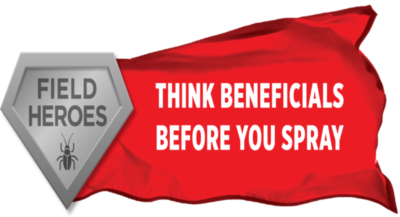The Field Heroes campaign continues to raise awareness of the role of beneficial insects in western Canadian crops. Check the recently updated Field Heroes website for scouting guides, downloadable posters, and videos. Learn about these important organisms at work in your fields!
Real Agriculture went live in 2020 with a Pest and Predators podcast series!
• Access Episode 1 – Do you know your field heroes? Jennifer Otani (Agriculture and Agri-Food Canada-Beaverlodge) and Shaun Haney (RealAg). Published online May 12, 2020.
• Access Episode 2 – An inside look at the Prairie Pest Monitoring Network. Meghan Vankosky (Agriculture and Agri-Food Canada-Saskatoon) and Shaun Haney (RealAg). Published online May 26, 2020.
• Access Episode 3 – How much can one wasp save you? Haley Catton (Agriculture and Agri-Food Canada-Lethbridge) and Shaun Haney (RealAg). Published online June 9, 2020.
• Access Episode 4 – Eat and be eaten — grasshoppers as pests and food John Gavloski (Manitoba Agriculture and Resource Development) and Shaun Haney (RealAg). Published online June 23, 2020.
• Access Episode 5 – Killer wasp has only one target — wheat stem sawfly Scott Meers (Mayland Consulting) and Shaun Haney (RealAg). Published online July 7, 2020.
• Access Episode 6 – Plentiful parasitoids Tyler Wist ( Agriculture and Agri-Food Canada-Saskatoon) and Shaun Haney (RealAg). Published online July 21, 2020.
Access ALL the Field Heroes links here and be sure to follow @FieldHeroes!
















